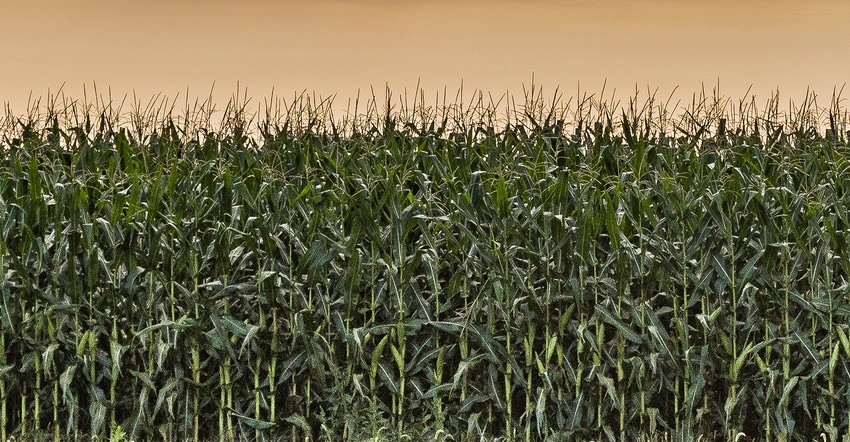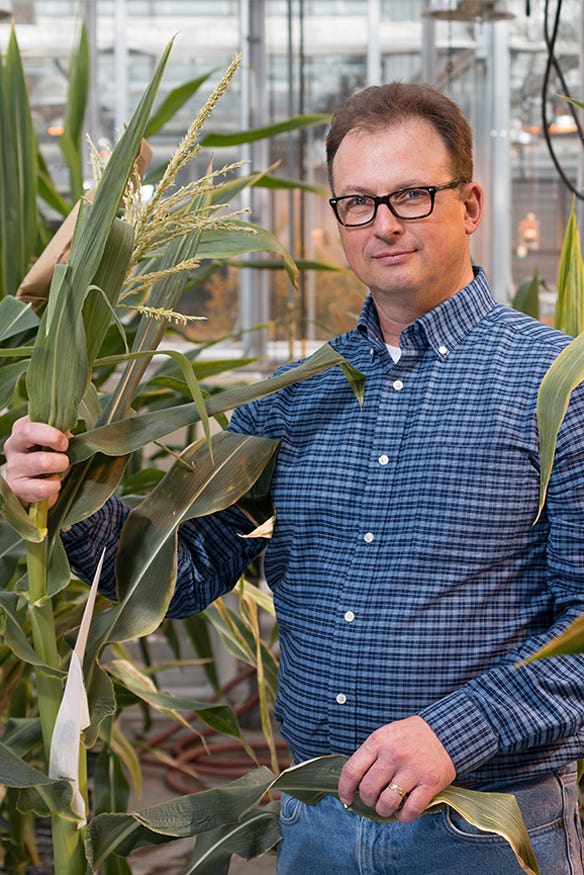August 30, 2017

By Eric Hamilton
“Having the sequence of a genome is like having the blueprint of a house,” says Natalia de Leon, a professor of agronomy at the University of Wisconsin-Madison.
But, says de Leon, if you don’t know how those plans get turned into a house, they don’t do you much good.
That’s a problem that the initiative she helps run, Genomes2Fields, is trying to address. By bringing the genomic revolution into cornfields, Genomes2Fields aims to improve the nation’s corn crop by uncovering how genomes — the blueprints for plants — are turned into yield, stress resistance and all manner of different traits. In a collaboration stretching across 20 states and into Canada, the project has tested hundreds of varieties of corn in more than 70 different environments since 2014 to tease out how genomes interact with environments to produce different traits in corn.
The project recently received a $1.25 million grant from USDA’s National Institute of Food and Agriculture to support its expanding field trials. Roughly $438,000 of the grant is slated for UW-Madison, which is a central hub for experimental design, seed distribution and machine vision analysis for the research. Initial and ongoing support for the project also comes from industry groups like the Wisconsin Corn Promotion Board. Other state corn growers associations are also supporting researchers from Genomes2Fields in their own states.
All of the data are made publicly available a year after they are collected, so any interested scientist could use this information to help advance knowledge and develop tools that will help produce improved varieties of corn.
Genomes2Fields put out its first multiple-state trial in 2014. It grew out of conversations with corn growers associations and other stakeholders that approached scientists like de Leon, wanting to know how the expanding genomic information about corn could help them in their fields and not just in a research lab.
“Once multiple corn genomes had been sequenced, it became desirable to see that information translated into products,” says Shawn Kaeppler, director of the Wisconsin Crop Innovation Center, a Genomes2Fields investigator and a member of the initiative’s executive committee.

CROP INVESTIGATOR: Shawn Kaeppler, director of the Wisconsin Crop Innovation Center, is also a Genomes2Fields investigator and a member of the initiative’s executive committee.

The project decided to focus on how corn responds to different environments.
“We want to understand what it is that makes certain plants more adapted to stressful environments than other plants,” says de Leon.
To do that, de Leon and 29 other researchers grow different lines of corn across the country, where they will be exposed to different stresses. By comparing the size of ears of corn grown in Texas heat against corn maturing during long, cooler Wisconsin summer days, for example, the researchers can uncover which genetic traits help corn varieties adapt to diverse environments. Each field is equipped with a weather station to ensure consistent climate data collection.
Scientists measure not only the size of ears and yield of corn, but also the plant height, the time it takes to flower and a number of other relevant traits. Each location decides to make unique measurements as well. De Leon and Kaeppler are partnering with UW-Madison botanist Edgar Spalding to test high-throughput methods for measuring the plants. Spalding flies drones over fields to measure plant size, and he has scanned corncobs from last year’s trials that are then measured by machine vision systems to quickly collect data.
The 2017 trials will, for the first time, collect soil and leaves from the majority of the test sites to analyze the microbiomes associated with the crops. As research continues to highlight the importance of microbial communities in human and animal health, plant researchers aim to uncover the role microbiomes play in crop growth as well.
Genomes2Fields is designed to combine the consistency across locations required to produce strong results with the flexibility needed for innovation in crop improvement research.
“The platform is out there for people to test and develop new technologies to try to make the process of improving plants, and translating all of this genomic information to the field, better,” says de Leon.
Hamilton works in the UW-Madison Communications Department.
You May Also Like




